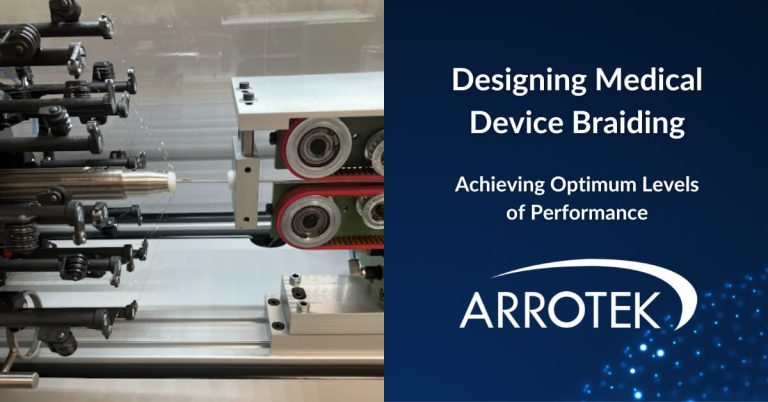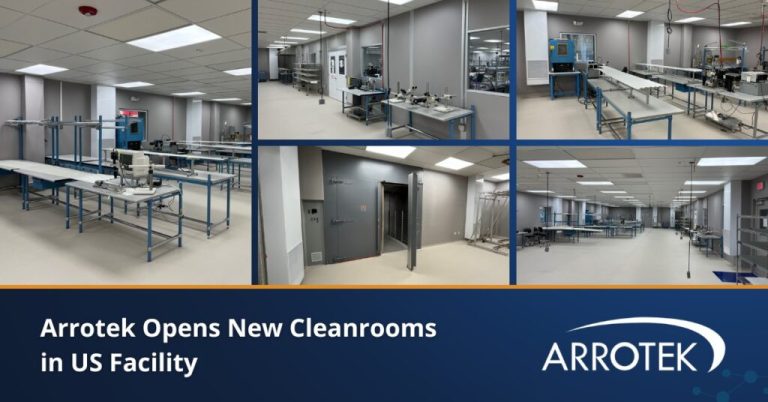Innovation and the medical device industry go hand in hand. At the same time, the industry is impacted by broader challenges, as well as being influenced by the demands and expectations of healthcare professionals and patients. Taking all this into account, what are the trends we should look out for in 2022 and beyond?
More Complex Minimally Invasive Medical Devices
Minimally invasive medical devices have transformed healthcare, but innovation in this field continues at pace. Existing medical devices, including ultra-thin-walled catheters, multi-lumen devices, and other advanced catheter technologies, will be improved. New, novel medical devices will also be developed.
One of the key drivers of innovation in this field is the ability to make catheter devices smaller than ever before through cutting-edge use of materials and tube reinforcement technologies. Enhanced innovation around delivery and recovery systems will also be a key feature of the industry in the short and medium-term.
It’s not just about going smaller, either, as smart catheter technologies are also an exciting area in this space. Over the next number of years, we will see an increase in the use of micro-sensor technologies, microelectronics, smart materials, and other innovations.
These advanced catheters and other minimally invasive medical devices deliver a vast range of benefits, including fewer complications during and after operations, reduced hospital stays, less postoperative pain, and faster recovery times. It is no exaggeration to say that advances in this field of medical technology are transforming healthcare.
The Rise of the Internet of Medical Things
Connected medical devices, including embedded devices, have advanced healthcare considerably over recent years, improving patient outcomes. However, we are only at the cusp of what is possible with these technologies.
From prevention to diagnosis to therapy, connected medical device technologies come under the umbrella of the Internet of Medical Things (IoMT). This includes medical devices and platforms that collect, generate, transmit, and analyse data. The data itself also comes under the IoMT umbrella.
The benefits of the IoMT include the real-time remote monitoring, diagnosis, and treatment of patients. Improving patient outcomes and optimising the workflows and processes of healthcare providers are some of the other benefits.
That said, the IoMT is an emerging technology, and it has a lot of issues to deal with, including the impact of regulations, value-based healthcare, data security, and the digital transformation of healthcare settings, to name a few.
However, we can expect the IoMT to continue to expand over the coming year and beyond with the increasing adoption of connected medical device technologies.
Increasing Use of Wearable Medical Device Technologies
Over the past couple of years, we have seen a change in the use of wearable devices. In the past, health and wellbeing wearable devices were mostly used by athletes and those interested in fitness. Today, the use of health-related wearable devices is much more widespread. This consumer trend, alongside the development of new technologies, will push new boundaries in the coming years.
We will see more and more medical device wearables as opposed to general health and wellbeing wearables. These devices will be connected to the IoMT, and they will be used for everything from managing chronic conditions to smart triaging of patients to preventative care and diagnosis.
It won’t just be about developing the sensor and wearable technologies, either, as there will also be rapid developments in the coming years to make sense of the data that these new wearables will produce, and ensure the data is accurate and protected.
Advances in Nanotechnologies
Nanotechnologies and nanomaterials are already used in medical devices with examples including vascular grafts, heart valves, and cancer therapeutics. It remains one of the most exciting areas of innovation in the industry.
Current trends in medical device nanotechnologies include improving the ability to target specific cells and control the release of drugs. The FDA has also recognised there are regulatory science gaps and challenges in relation to nanotechnologies and it is working to fill them.
Opportunities Ahead
At Arrotek, we thrive on innovation and pushing the boundaries of materials, technology, and catheter design in the creation of new minimally invasive medical devices. It is an exciting time to work in the sector and contribute to the improvement of health outcomes for patients all over the world. To discuss your project with a member of our team, please get in touch.





